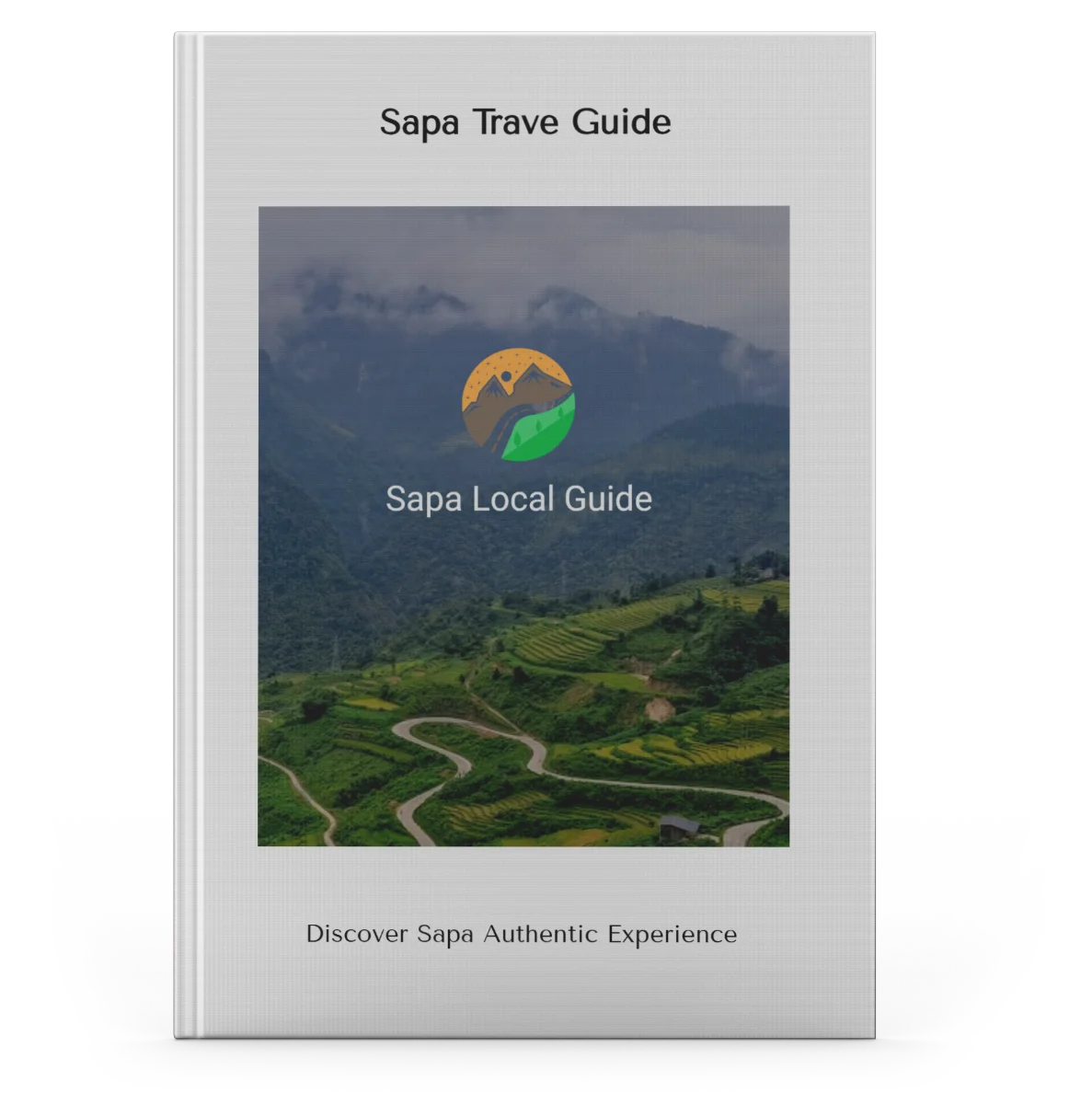![]()
Authentic Experience of Sapa
Sapa Vietnam, is famous for its stunning landscapes,cultu ral diversity. The ethnic groups, Black Hmong stand out with their unique traditions explore Black Hmong villages like Cat Cat Ta Van, witnessing their daily life traditional crafts
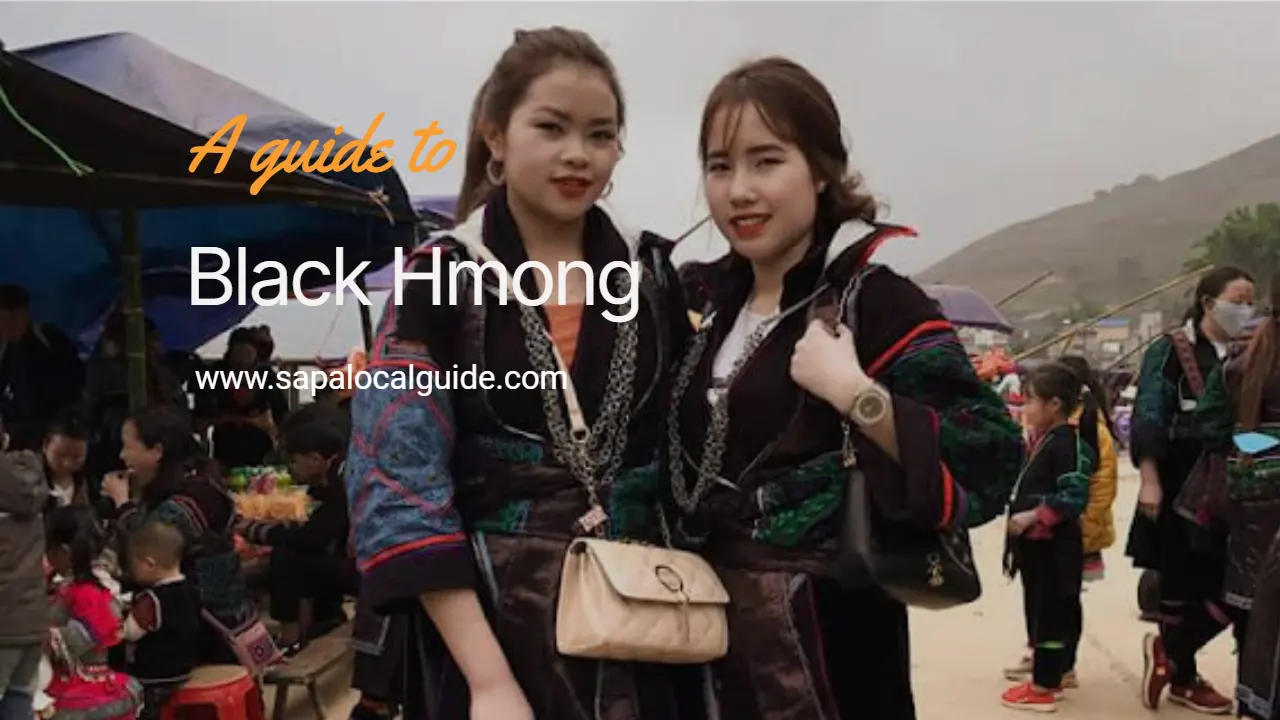
Sapa, located in the northern part of Vietnam, is renowned for its breathtaking landscapes and rich cultural diversity. Hmong the ethnic groups residing in this region, the Black Hmong people stand out with their unique culture and traditions. Understanding the Black Hmong community provides a deeper appreciation of Sapa local guide experience authentic cultural tapestry.
The Black Hmong people are one of six ethnic groups living in Sapa, making up over 53% of the area's population. Their lives are shaped by the rough mountains, especially in Sapa with its green terraced fields and deep valleys. They depend on farming to live, growing crops like rice, corn, vegetables, and other plants on the terraced fields. Traditional crafts like weaving and making handicrafts are also important for their economy, helping to keep their rich culture alive.
The Hmong people in Sapa Vietnam are divided into 4 groups: Hmong Hoa, Black Hmong, Green Hmong, and White Hmong. Even though there are four different groups, their language and culture are mostly the same. The differences between the groups are mainly based on women's clothing.
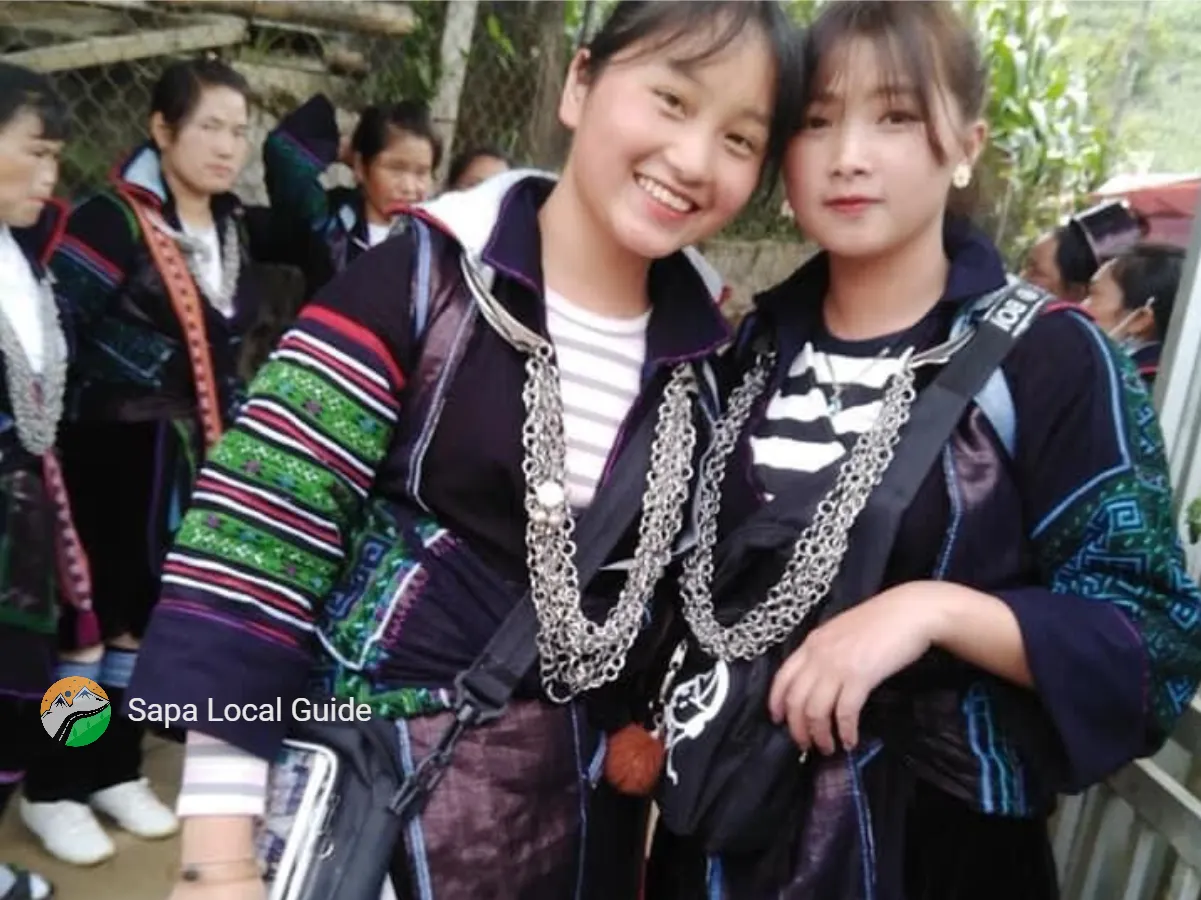
The Black Hmong people in Y Linh Ho Village have a long history that traces back to their migration from China to Vietnam centuries ago. They settled in the mountainous regions of Sapa, where they have maintained their distinct cultural identity. The historical journey of the Black Hmong is significant in understanding their current way of life and their contributions to Sapa's heritage a region renowned for its breathtaking landscapes and vibrant ethnic diversity. Among the various indigenous groups that call this rugged terrain home, the Black Hmong people stand out not only for their distinctive appearance but also for their rich cultural heritage and resilient way of life.
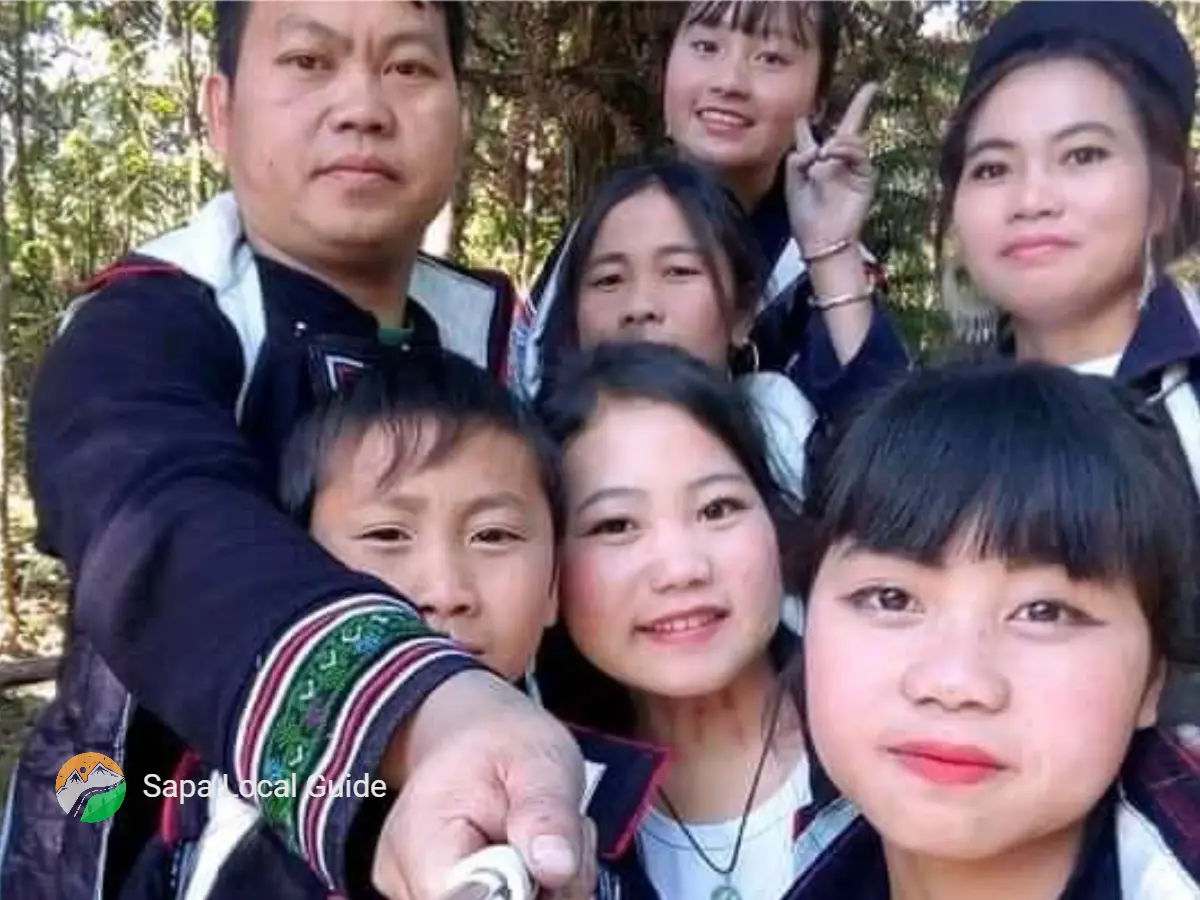
The Black Hmong are easily recognizable by their traditional clothing, which features indigo-dyed fabrics adorned with intricate embroidery. Each piece of clothing carries symbolic meanings and reflects the wearer's social status and personal achievements. The Black Hmong people also uphold unique customs and rituals, such as traditional wedding ceremonies and harvest festivals, which highlight their deep connection to nature and community.
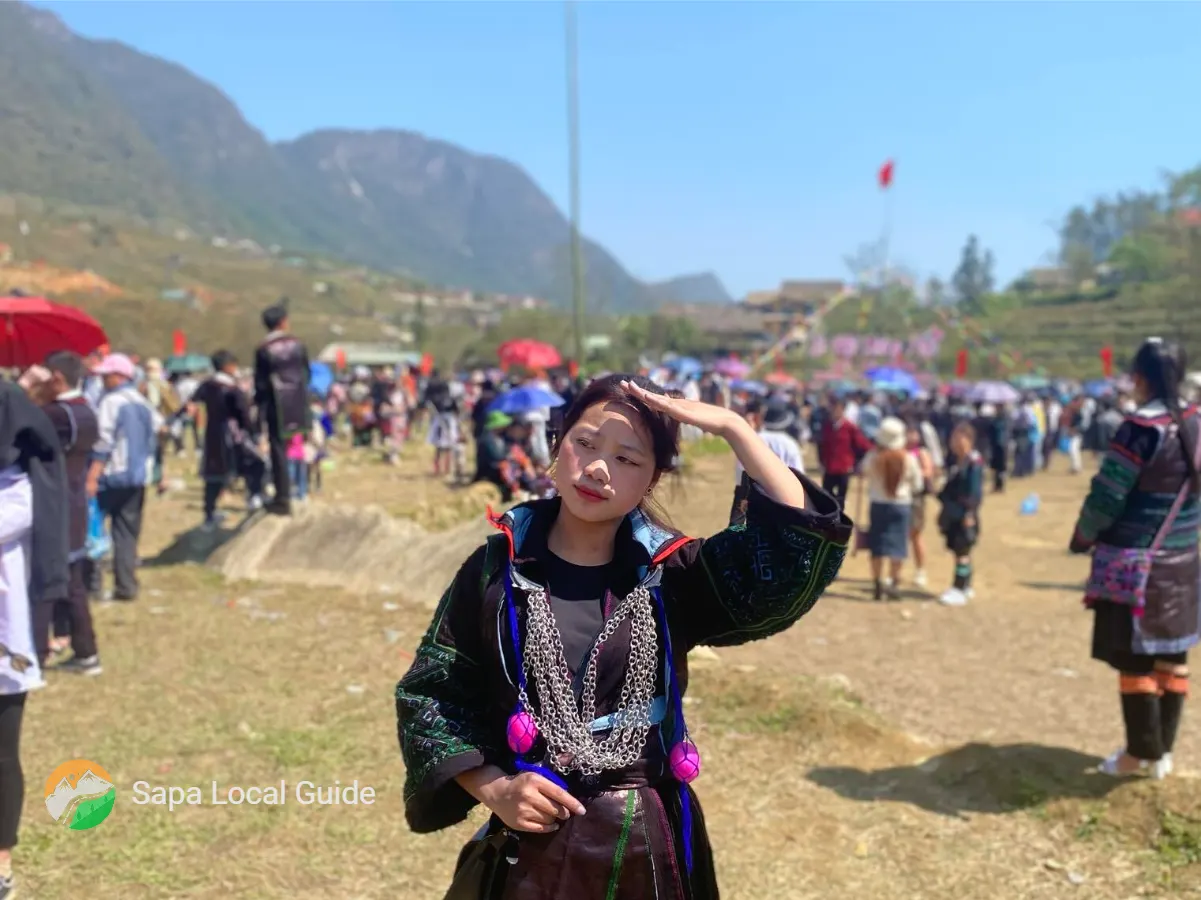
Beliefs:
In a Hmong house, many places are used for worship. There are areas for ancestors, the house spirit, the kitchen spirit, and even the door spirit. Various rituals exist that prohibit people from entering a Black Hmong house or village. For instance, a green tree branch on the front door means no entry, if you like to explore it will be a great trip just 1 day Local trekking in Sapa.
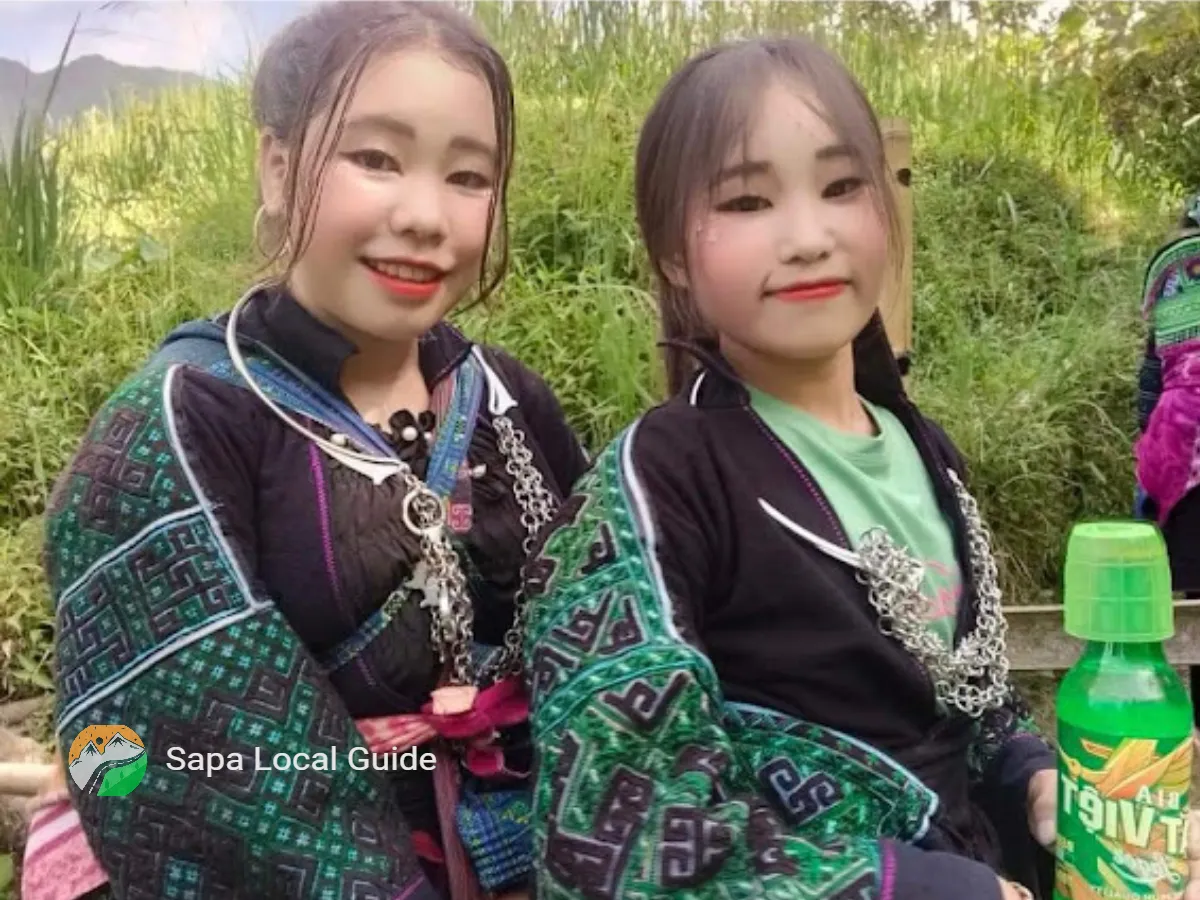
Costume:
Black Hmong women are famous for making hemp cloth and dyeing it dark indigo blue. They wear long blouses with batik flower designs over short trousers and wrap long scarves around their legs. Their long hair is wrapped around their heads and topped with a blue turban. Men wear long jackets, shirts, and long waistcoats embroidered at the collar, along with a small hat. Nowadays, some H'mong people wear Vietnamese or Western clothes.
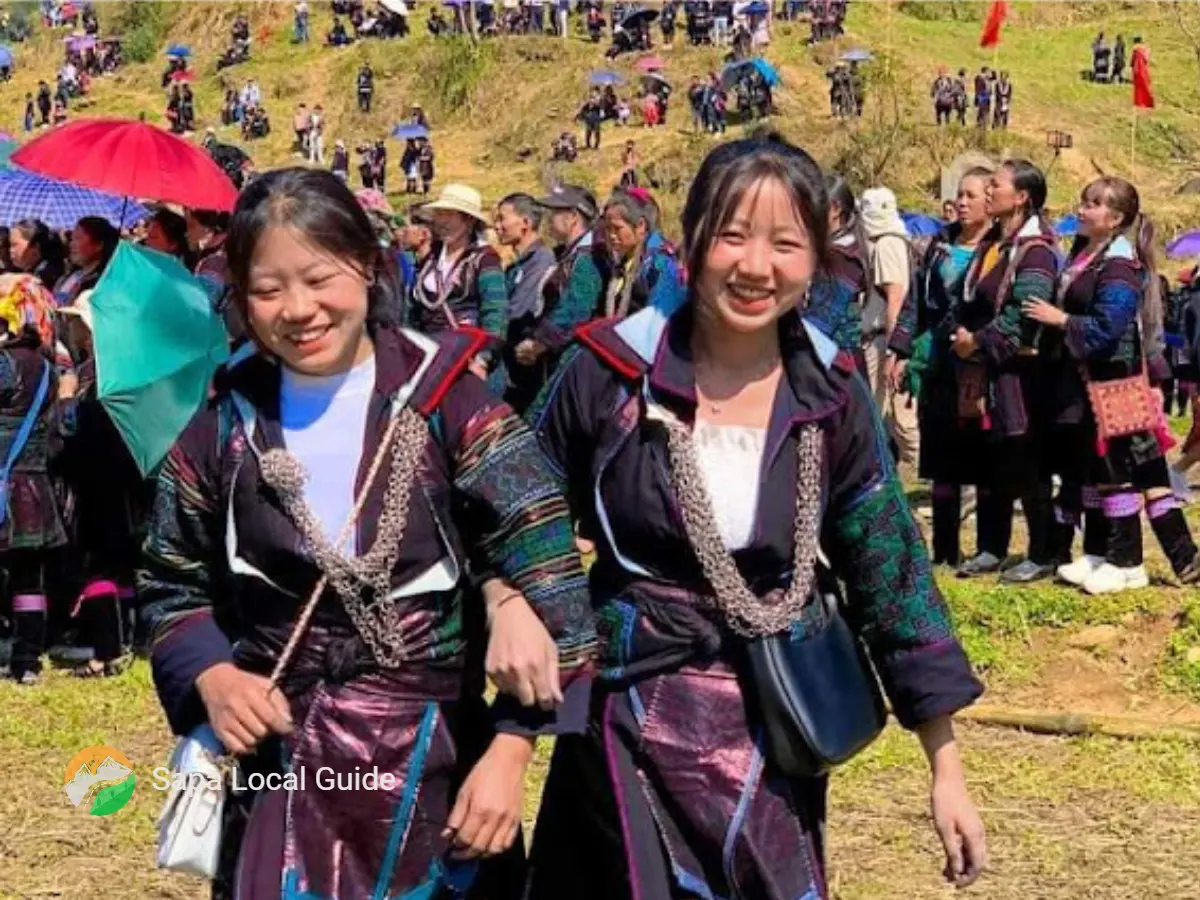
Hmong women are respected and seen as equals to men in their community. Husbands and wives are very affectionate and perform many tasks together, like going to the market, working in the fields, and visiting relatives. This cooperation helps build a strong community life.
Festivals:
The Black Hmong have many festivals throughout the year. These festivals ensure that there is always time for community activities, which are crucial to their life. One of the most important festivals is the New Year, celebrated for a whole month, about a month before Vietnamese Tet. During this time, boys play flutes and girls play an instrument made from two leaves, and they enjoy traditional games together.
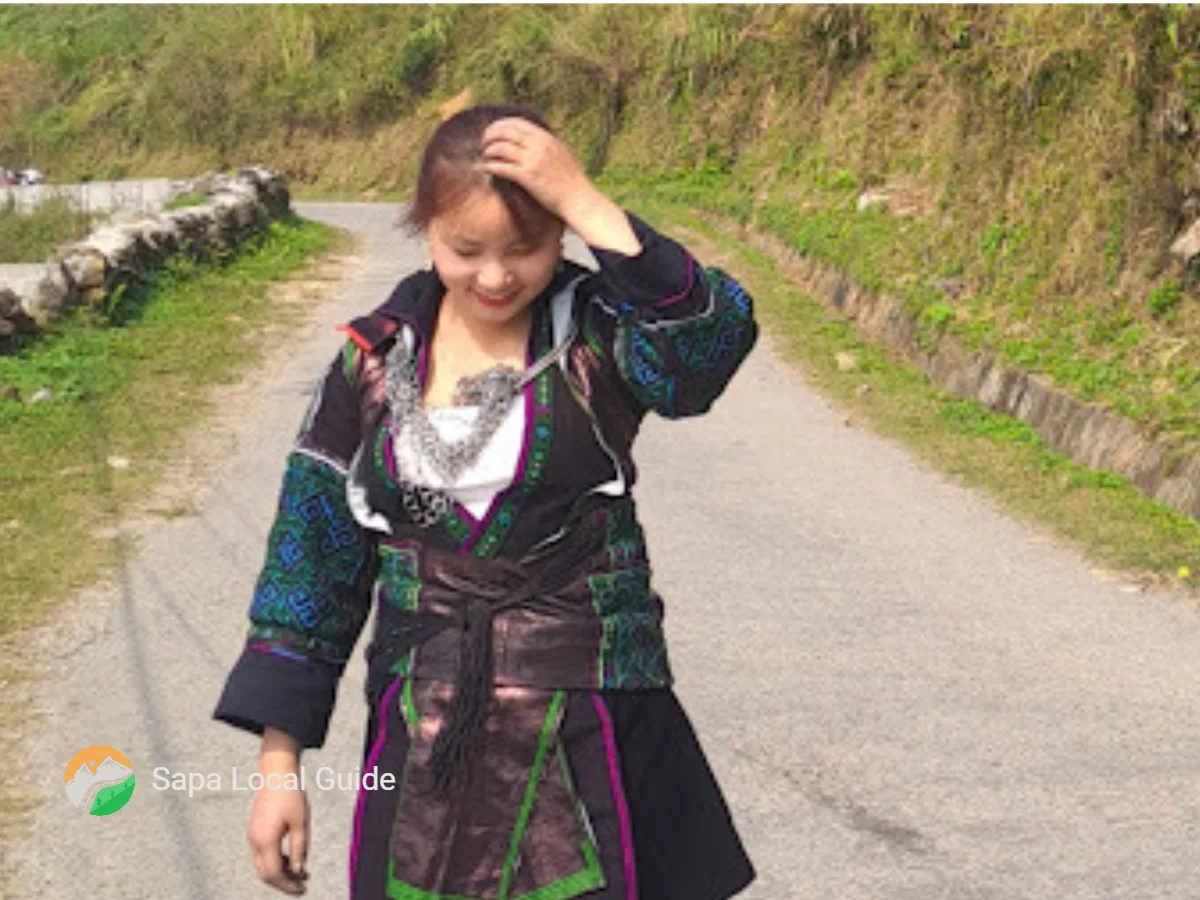
Marriage:
For the Black Hmong, a girl needs to know how to embroider and work well in the fields, which are more important than beauty. Boys and girls can get to know each other before marriage. They meet at the love market, where they eat and sing together. After this, the boy can propose marriage. If the girl agrees, she moves into his house. She is put in a small room and visited by the boy’s mother and sisters, who bring her food to persuade her to accept the marriage.
The boy must give the bride’s family silver coins, pigs, chicken, and rice wine for the wedding. The bride has time to decide if she accepts the marriage even after living with her husband for a few days, she can break the agreement. If the boy doesn’t have a dowry, he lives in the girl’s house until he can marry her.
Funeral:
When someone dies, the children fire a gun to let everyone know. Villagers come to the deceased’s house with whatever they have chicken, rice, a small pig, or rice wine to help the family. Everyone sings and eats until the deceased is wrapped in a mat and carried to a grave by one group, while another group carries a coffin kept in a nearby cave. Both groups run fast to meet at the grave, so the deceased forgets the way home. If the family can't afford the funeral, they can wait a few years and organize a special one called “ma kho.” They invite villagers to the grave for a celebration, where they sing and dance, The Y Linh Ho village is a village for you if you want to know and explore the authentic experience in local life in Sapa
Agriculture is the primary livelihood for the Black Hmong, with rice and corn being their main crops. They practice terrace farming, which is well suited to the hilly terrain of Sapa. In addition to farming, the Black Hmong are skilled artisans, producing beautiful handicrafts such as textiles and silver jewelry. The rise of tourism in Sapa has also provided the Black Hmong with new economic opportunities, allowing them to sell their crafts and offer trekking tours to visitors.
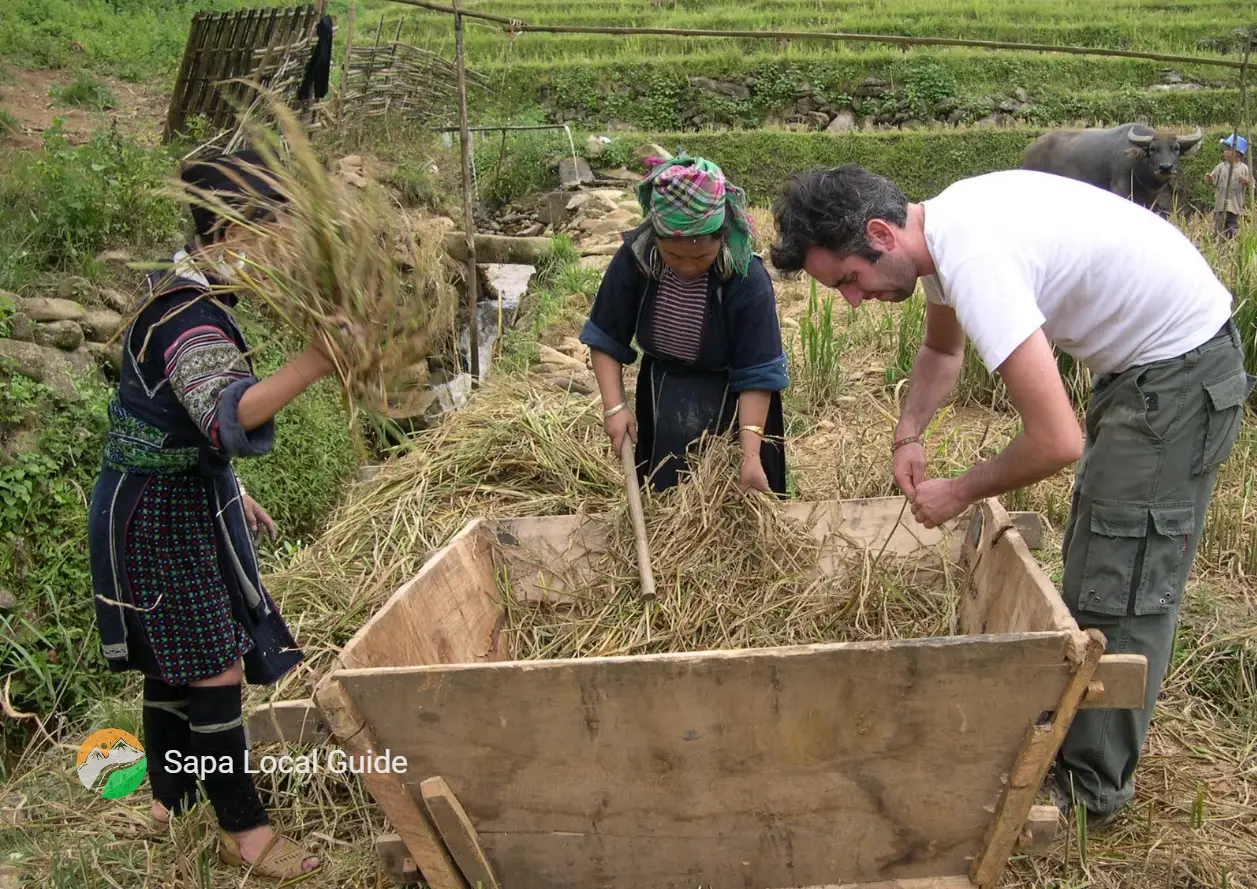
The Hmong language is an essential aspect of their identity, with distinct dialects that differentiate them from other ethnic groups in the region. While many Black Hmong people have learned basic Vietnamese to communicate with outsiders, language barriers can still pose challenges. However, their warm hospitality and willingness to share their culture often bridge these gaps.
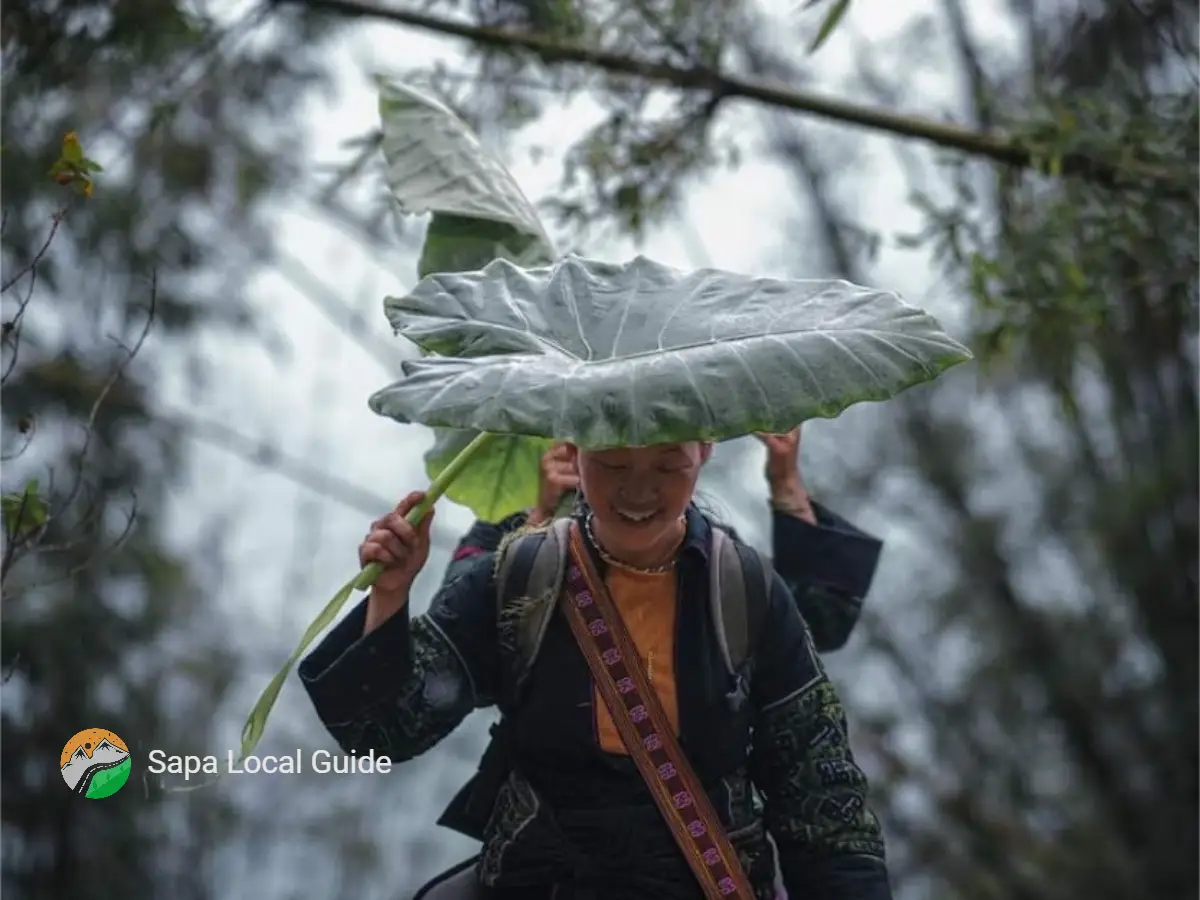
Modernization has brought both opportunities and challenges to the Black Hmong community. While access to education and healthcare has improved, traditional lifestyles are under threat from rapid development and cultural assimilation. Efforts are being made to preserve their cultural heritage, such as documenting traditional knowledge and promoting sustainable tourism practices.
Visitors to Sapa can experience the Black Hmong culture firsthand by visiting their villages. Popular destinations include Cat Cat, Sin Chai, Lao Chai, and Ta Van villages. Tourists can observe daily activities, participate in traditional crafts, and enjoy the stunning scenery. It is important for visitors to respect local customs, dress modestly, and seek permission before taking photographs to ensure a positive and respectful interaction.
Sapa 1 Day

1 day experience,Rice fields, valley, villages. Moderate to challenging, Private,Vegan-friendlyCultural immersion & active adventure
Motorbike Tour

1 day experience,Rice fields,waterfall.Challenging,Private tours friendly Cultural immersion, active adventure
Sapa 2 Days

2 days 1 night experience. Moderate to challenging, adventure. Mountains, valleys, rice fields and villages. Vegan-friendly
Sapa 3 Days

3 days 2 night experienc, Moderate to challenging. Mountains, valley, rice fields & villages. Private tours. Vegan-friendly
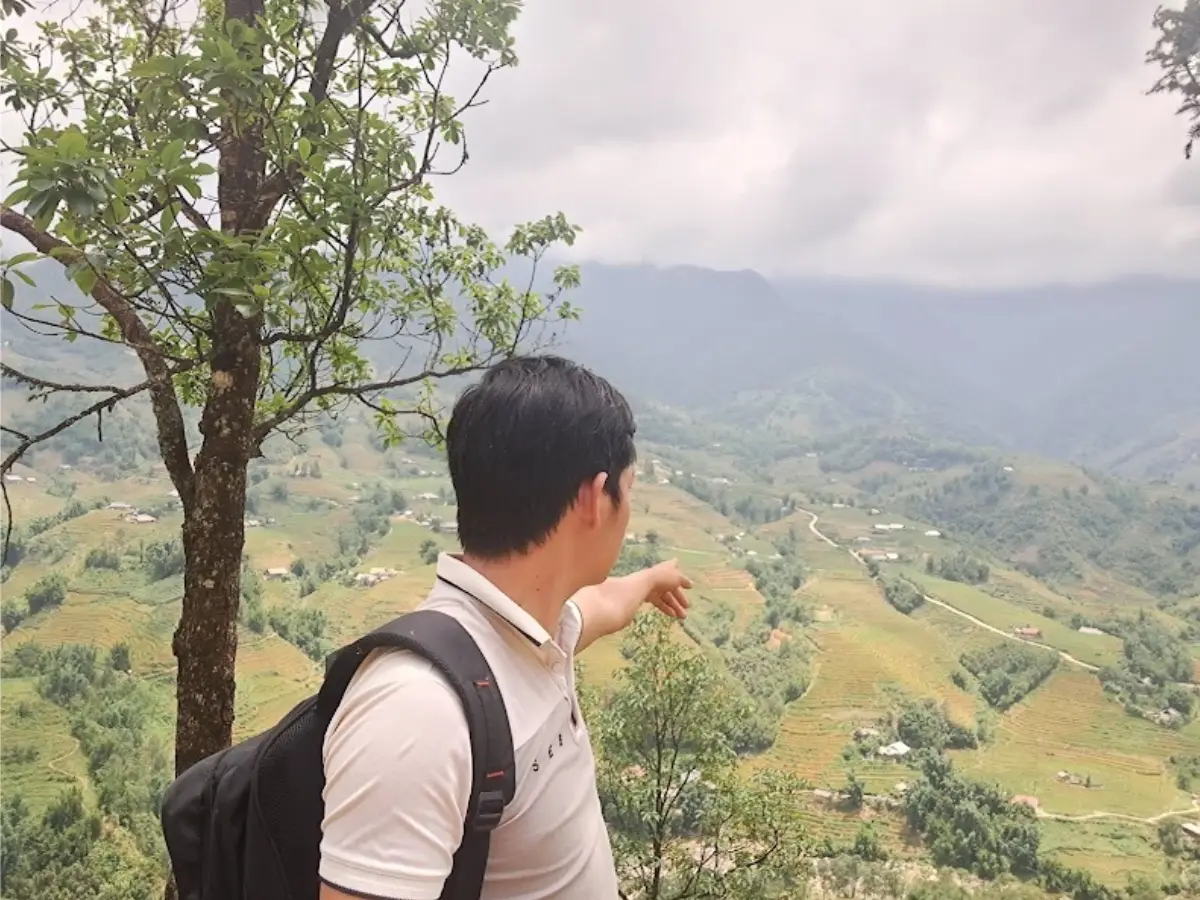
The Black Hmong people are an integral part of Sapa's rich cultural mosaic. Their history, traditions, and way of life offer valuable insights into the region's diversity. As visitors, it is crucial to appreciate and respect their culture, contributing to the preservation of their unique heritage for future generations.
Feel free to make any adjustments or let me know if there's a specific focus you'd like to emphasize!
Complete with itinerary, destinations, food, accommodation and tips!
